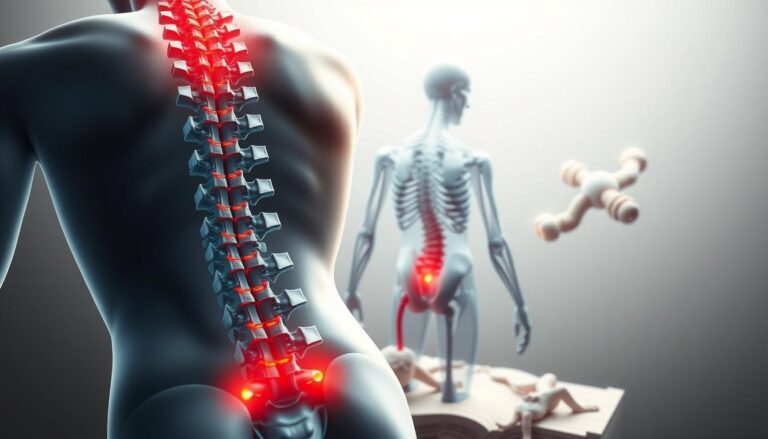Feeling tired, slow, and short of breath? You might have anemia a common blood issue from not enough red blood cells or hemoglobin. But don’t worry there are ways to fix it.
This guide will cover different treatments to increase your iron and boost your energy. We’ll look at diet changes and medical options to fight iron deficiency and make you feel better.
Key Takeaways
- Anemia is a common blood disorder caused by a lack of red blood cells or hemoglobin
- Effective anemia treatments include iron supplements, dietary changes, and medical interventions
- Iron-rich foods and folic acid supplements can help address mild cases of iron deficiency anemia
- Severe cases may require intravenous iron infusions, blood transfusions, or erythropoietin therapy
- Consulting a healthcare professional is crucial for proper diagnosis and personalized treatment
Understanding Anemia A Deficiency in Red Blood Cells
Anemia is a common health issue that affects many people around the world. It happens when there aren’t enough healthy red blood cells or not enough hemoglobin. Hemoglobin is a protein that carries oxygen throughout the body.
This lack can cause anemia symptoms like feeling very tired, weak having pale skin, and breathing short.
Symptoms of Anemia and Its Causes
There are many reasons why someone might get anemia, but they all lead to not having enough red blood cells. Some common causes include:
- Iron deficiency, the leading cause of anemia
- Vitamin B12 or folate deficiency
- Chronic bleeding or blood loss
- Chronic diseases, such as cancer or kidney failure
- Inherited disorders, like sickle cell anemia or thalassemia
Iron Deficiency: The Primary Culprit
Iron deficiency anemia is the most common type of anemia. It happens when the body doesn’t have enough iron. This means it can’t make enough hemoglobin.
Things that can lead to iron deficiency anemia are eating too little iron, needing more iron during pregnancy or childhood, or having conditions that make it hard to absorb iron.

Anemia is a serious health issue that affects millions of people, but it can often be effectively treated with the right approach.
Iron Supplements A Simple Solution for Mild Cases
For people with mild or simple anemia, iron supplements are a good choice. Over the counter iron pills, like ferrous sulfate or ferrous gluconate can fill up iron stores. This helps make more red blood cells.
It’s key to follow the dosage instructions and talk to a healthcare expert. They can help pick the right iron supplement and amount for you. This ensures you get the most out of the supplement and avoid side effects.
Iron supplements can really help those with mild anemia. They bring back iron levels, easing symptoms like tiredness, weakness, and pale skin. This lets you feel more energetic and full of life.
| Supplement | Recommended Dosage | Benefits |
|---|---|---|
| Ferrous Sulfate | 65-325 mg daily | Highly absorbable, cost-effective |
| Ferrous Gluconate | 120-300 mg daily | Gentler on the stomach, suitable for sensitive individuals |
Even though iron supplements are easy for mild anemia, it’s smart to talk to your healthcare provider. They can suggest the best treatment plan for you.

Iron supplements can be a game-changer for those with mild anemia, helping to restore iron levels and alleviate symptoms.
Anemia Treatment A Comprehensive Approach
Iron supplements can help with anemia but a full treatment plan is more complex. Eating foods high in iron is a natural way to get this important mineral. For those with pernicious anemia, vitamin B12 injections are often key.
Dietary Changes: Embracing Iron-Rich Foods
To fight dietary changes for anemia, add more iron rich foods to your meals. Lean red meat, leafy greens and fortified cereals are great choices. These foods help your body make more red blood cells.
Vitamin B12 Injections A Crucial Complement
For some, vitamin b12 injections for anemia are needed. This is especially true for pernicious anemia, where the body can’t absorb vitamin B12. Regular injections help make sure your body has enough B12 to make healthy red blood cells.
Combining diet changes with medical treatments helps people with anemia feel better and more energetic.

Incorporating more iron-rich foods and vitamin B12 supplements can make a significant difference in the management of anemia.
Intravenous Iron Infusions A Direct Approach
For those with severe or ongoing anemia, intravenous IV iron infusions can be a powerful solution. This method delivers iron straight into the bloodstream skipping the digestive system. It’s perfect for people who can’t absorb iron well through supplements or diet changes.
Intravenous iron infusions have many benefits:
- Rapid replenishment of iron stores: The infusion quickly boosts iron levels, which is great for severe anemia.
- Improved absorption: Unlike oral supplements, IV infusions ensure the iron goes straight into the bloodstream. This means better use by the body.
- Convenience and flexibility: Treatments can be customized to fit each patient’s needs, with flexible dosing and schedules.
Getting an intravenous iron infusion is easy. A healthcare professional puts the iron solution into the patient’s vein over a few hours. This method has changed lives for many fighting iron infusions for anemia.
| Advantages of Intravenous Iron Infusions | Disadvantages of Intravenous Iron Infusions |
|---|---|
| Rapid replenishment of iron stores | Potential side effects, such as allergic reactions or discomfort at the injection site |
| Improved absorption compared to oral supplements | Requirement for healthcare professional administration |
| Flexible dosing and administration schedules | Higher cost compared to oral supplements |
Intravenous iron infusions are a direct and effective way to fight anemia. But, it’s key to talk with a healthcare professional to find the best treatment plan. This option can help people with iron deficiency feel better and improve their health.

Intravenous iron infusions have been a game-changer for me. After struggling with anemia for years, this direct approach has allowed me to finally regain my energy and vitality.
Blood Transfusions A Temporary Fix
In severe cases of anemia, blood transfusions might be needed. This method involves putting red blood cells directly into the patient’s blood. It helps increase oxygen carrying capacity. But blood transfusions also have risks that need careful thought.
Understanding the Risks and Benefits
Blood transfusions can greatly help with anemia. Yet, it’s important to look at the risks of blood transfusions too. These risks include infections allergic reactions, and other issues. A healthcare professional should guide you through these risks.
Before a blood transfusion talk to your doctor about these points:
- Possible side effects like fever chills, and allergic reactions
- The chance of getting bloodborne infections, such as HIV and hepatitis
- The fact that this treatment is only temporary and you’ll need ongoing care for your anemia
Knowing the risks and benefits of blood transfusions helps patients make informed choices. They can work with their healthcare team for the best and safest treatment for their anemia.
Blood transfusions can be a lifesaving intervention, but they must be approached with caution and careful consideration of the potential risks.
Erythropoietin Therapy Boosting Red Blood Cell Production
Erythropoietin EPO therapy is a key solution for treating anemia. It targets the root cause of some anemias by boosting red blood cell production. This approach is revolutionary.
EPO is a hormone made by the kidneys. It tells the bone marrow to make more red blood cells. For people with anemia due to chronic kidney disease EPO therapy can be a big help. It increases the number of red blood cells that carry oxygen in the body.
This therapy is unique among medications that increase red blood cells. It uses the body’s own processes for a more tailored and effective treatment. This helps fight the effects of low red blood cell count.
EPO therapy has been a lifesaver for many of my patients struggling with anemia related to kidney disease. It’s amazing to see the difference it can make in their energy levels and overall well being.
– Dr. Sarah Wilkins, Nephrologist
EPO therapy isn’t a cure-all for anemia, but it’s a strong treatment option. Healthcare providers can use it to meet their patients’ specific needs. This makes it a valuable tool in fighting anemia.

| Advantages of EPO Therapy | Potential Drawbacks |
|---|---|
|
|
Anemia Treatment for Aplastic Anemia
Treating aplastic anemia often requires a more intense approach. This condition makes it hard for the bone marrow to make enough red blood cells. As a result the number of red blood cells drops significantly. In these cases, standard treatments for anemia might not work well. Healthcare providers then look into other options.
Bone Marrow Transplant A Last Resort
For some people with aplastic anemia, a bone marrow transplant is the last choice. This method replaces the faulty bone marrow with healthy stem cells. This helps to make blood cells normally again.
First the patient’s immune system is weakened with medicine. Then stem cells from a donor are given to start a new healthy bone marrow.
This treatment can be very effective against aplastic anemia but has risks. Risks include graft-versus-host disease, infections, and harm to organs. So, doctors carefully check each patient’s situation and health before suggesting this treatment.
Choosing to have a bone marrow transplant for aplastic anemia is a big decision. It needs careful thought from the patient, their family, and the medical team. By looking at all the options and the risks and benefits, people can make a choice that fits their goals and what they prefer.

Folic Acid Supplements A Complementary Solution
Folic acid, also known as vitamin B9, is key for making red blood cells. If you have anemia due to low folic acid, your doctor might suggest supplements. These can help your body make more red blood cells.
For people with low folic acid, supplements can be a big help. They boost the body’s ability to make new red blood cells. These cells carry oxygen throughout the body and prevent anemia symptoms.
Folic acid supplements work well with other treatments for anemia, like iron supplements or eating better. This helps tackle different causes of anemia for better recovery.
When adding folic acid supplements to your treatment plan, talk to your healthcare provider. They can tell you the right amount to take and check if it’s working.
Using folic acid supplements along with other treatments helps you fight anemia from all angles. With the right mix of approaches, you can get your energy back and feel better overall.
| Folic Acid Supplements for Anemia | Benefits |
|---|---|
| Supports red blood cell production | Helps address nutrient deficiency-related anemia |
| Works well with other anemia treatments | Promotes a comprehensive approach to anemia management |
| Requires healthcare provider guidance | Ensures proper dosage and monitoring for optimal results |
Anemia Treatment Tailoring to Individual Needs
Effective personalized anemia treatment means creating a plan just for you. Doctors and healthcare workers team up with patients to make a detailed anemia treatment plan. They look at the cause how bad it is, and your overall health.
There’s no one way to fix anemia for everyone. Doctors must think about many things to find the best way to help you. This might mean eating better, taking supplements, or getting medical help to meet your needs.
- Dietary adjustments to increase iron-rich foods
- Targeted supplementation with iron, vitamin B12, or folic acid
- Intravenous iron infusions for severe cases
- Blood transfusions or erythropoietin therapy in certain situations
- Bone marrow transplant as a last resort for aplastic anemia
Customizing the anemia treatment plan for each person helps them get better faster and more effectively. This way, it tackles the symptoms and the real causes. It helps you stay healthy in the long run.
The key to effective anemia treatment is to address the root cause, not just the symptoms. A personalized plan is essential for a full recovery.
Overcoming anemia is different for everyone. With a tailored personalized anemia treatment plan, you can feel your best again.
Conclusion Regaining Your Vitality
Anemia can be tough, but you can get your energy back. By finding and treating the main cause, you can boost your red blood cell count. This helps your body get the oxygen it needs.
There are many ways to fight anemia, like eating more iron-rich foods, taking supplements, or getting medical help. These steps can help you feel more energetic and fight off anemia’s tiredness.
It’s important to work with doctors to make a plan that fits you. Adding iron-rich foods, taking vitamins, and trying treatments like IV infusions can help. This way, you can feel like your old self again.
Every person’s anemia is different, so treatment plans vary. But with the right support and care for your health, you can beat anemia and get your energy back. Start your journey to better health and enjoy life more fully.





